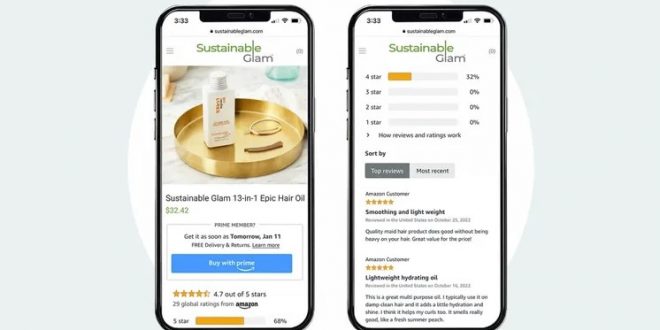The business is also introducing a feature that would let Buy with Prime merchants to incorporate customer reviews and rankings from Amazon into their own websites.
Amazon is making its “Buy with Prime” button more widely available. On their own websites, more online retailers in the US will be able to begin offering Prime membership perks including free shipping and next-day delivery as of January 31st.
Naturally, users of the service will have to pay for a Prime subscription, which increased from $119 to $139 annually in February. The key distinction between ordering through Buy with Prime and doing so through Amazon is that you cannot track your orders on Amazon.com; instead, you must click the link in your shipment confirmation email to see the status of your transaction.
If you choose to utilize the Buy with Prime button, you should be aware that Amazon will track your interactions with it even if the third-party website does not. This information includes your account’s contact data, the specifics of any orders, and how frequently you utilize (or cancel) any orders placed using the Buy with Prime button. Along with information about the products, inventories, and prices of the merchants who use Buy with Prime, Amazon also stores this data.
Amazon has endured criticism for using data to compete with (and occasionally steal things from) third-party vendors for years. In December, Amazon and the EU came to an agreement regarding the company’s data practices. As a result, Amazon is no longer allowed to use the nonpublic information it gathers from independent sellers on the platform to determine which products it should introduce or what price it should set them at. As a tiny compromise, the corporation started providing vendors with extra data in 2021 to aid in identifying popular products.
The Buy with Prime feature still has a cost for retailers despite being made available to sellers who don’t sell on Amazon. The “cost per unit” is dependent on “many factors, including product dimensions and weight, average selling price, and number of units per Buy with Prime purchase,” according to Amazon’s FAQ section on the Buy with Prime page. This covers processing payments, service charges, and fulfillment storage at Amazon’s facilities. According to Amazon, “merchants pay for what they use, and all fees, other than those incurred for storage, are only paid once merchants complete a sale.”
The tool was initially released by Amazon in April of last year, but it was only accessible by invitation to Fulfillment by Amazon (FBA) organizations. Customers may consider the feature to be a more alluring way to purchase goods on independent websites because, according to internal data gathered by Amazon, it has raised consumer conversion by an average of 25%. That’s good news for Amazon, which wants to expand its fulfillment operation and retain clients (and vendors) inside the Amazon ecosystem.
The expansion comes as Walmart and Best Buy try to fend off competition from Amazon’s Prime membership. Free delivery and access to Paramount Plus are included in Walmart’s $98/year Plus subscription, while Best Buy recently included free shipping as part of its no-cost My Best Buy program. (Best Buy currently provides non-members with free shipping on orders totaling over $35).
 Tech Gadget Central Latest Tech News and Reviews
Tech Gadget Central Latest Tech News and Reviews




